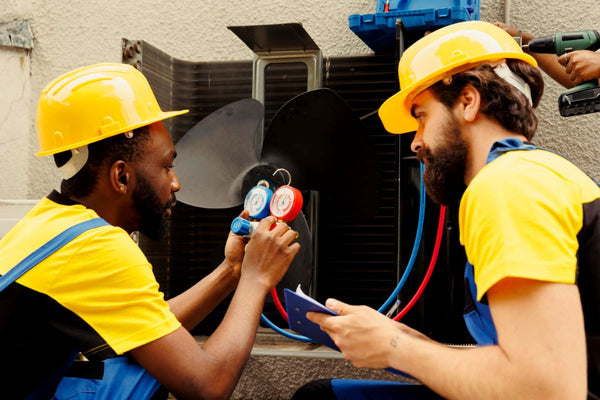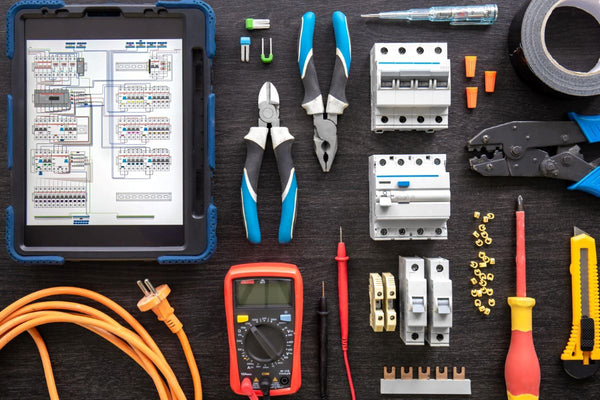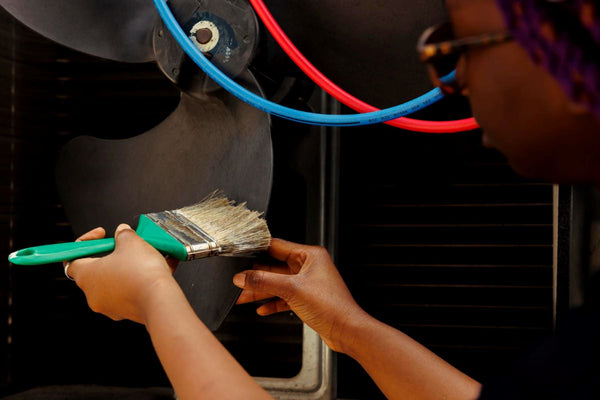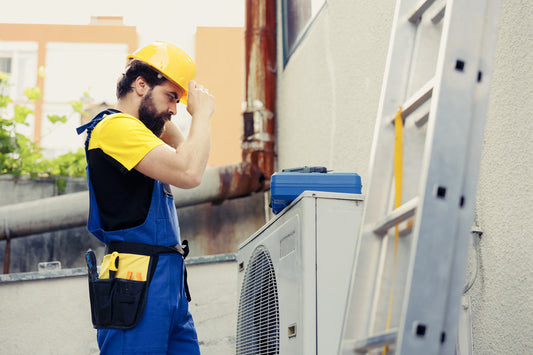The Evolution to Smart Gauges
In the realm of HVAC maintenance and diagnostics, technology has taken a significant leap forward with the introduction of smart gauges. These next-generation tools are revolutionizing how technicians interact with HVAC systems, making the process smarter, faster, and more accurate.
Features of Smart Gauges
Smart gauges come packed with features that make traditional gauges look like relics of the past. With digital displays that offer clear, precise readings, technicians can say goodbye to the guesswork associated with analog dials. But it's not just about readability; these tools also boast Bluetooth connectivity, allowing for the wireless monitoring of system pressures and temperatures.
Imagine being able to view all your readings on a smartphone or tablet, and even record data for detailed analysis. This capability not only enhances diagnostic accuracy but also streamlines the maintenance process, saving time and effort.
Benefits Over Traditional Gauges
The shift from traditional to smart gauges is akin to the transition from manual tools to power tools in the world of construction. It's about efficiency and precision. Smart gauges reduce the margin of error, provide a wealth
of information for troubleshooting, and offer functionalities that go beyond mere pressure measurements. The ability to log and track system performance over time is invaluable, allowing for a proactive approach to maintenance. This means potential issues can be identified and addressed before they escalate into major problems, ultimately saving homeowners and businesses time and money.
Moreover, smart gauges are designed with the user in mind, featuring intuitive interfaces that make them accessible to technicians of all skill levels. Whether you're a seasoned pro or new to the field, these tools can significantly enhance your ability to diagnose and maintain HVAC systems effectively.

Practical Tips for Using Manifold Gauges
While having the right tools is crucial, knowing how to use them effectively is just as important. Here are some practical tips to ensure you get the most out of your manifold gauges, whether they're traditional or smart.
Proper Connection Techniques
First things first: making sure your manifold gauges are properly connected to the HVAC system is critical. This might seem like a basic step, but it's one that can significantly impact the accuracy of your readings. Always ensure that the low side hose is connected to the suction line and the high side hose to the discharge line.
Additionally, make sure the connections are secure to prevent any leaks of refrigerant, which can skew your measurements and harm the environment.
Preventing Refrigerant Loss
Speaking of refrigerant loss, it's not just bad for the environment—it can also be costly and reduce the efficiency of the HVAC system. To minimize this risk, use hoses with low-loss fittings and ensure they're tightly connected. When disconnecting the system, be quick and deliberate to prevent refrigerant from escaping.
Remember, preserving refrigerant levels is not only a matter of efficiency and cost but also of legal compliance, as many regions have strict regulations on refrigerant handling and leaks.
The Importance of Regular Calibration
Whether you're using traditional or smart gauges, regular calibration is essential. Over time, gauges can become less accurate, leading to diagnostic errors and inefficient system maintenance. Analog gauges, in particular, are prone to drift and should be calibrated more frequently.
However, don't overlook the need to check and calibrate digital gauges as well, to ensure they continue to provide precise readings. This step is crucial for maintaining the reliability of your diagnostic tools and the effectiveness of your work.

Conclusion
HVAC manifold gauges are indispensable tools in the arsenal of any HVAC technician. They not only facilitate accurate diagnostics and efficient maintenance but also ensure systems are running optimally, providing comfort and safety to buildings' occupants.
The evolution from traditional to smart gauges represents a significant advancement in HVAC technology, offering enhanced features, precision, and convenience. By adhering to best practices and utilizing these tools effectively, professionals can ensure the longevity and efficiency of HVAC systems, ultimately contributing to a more sustainable and comfortable living and working environment.
FAQs
What's the difference between analog and digital manifold gauges?
Analog gauges rely on mechanical movements to display pressure readings, while digital gauges use sensors and display readings electronically, offering higher precision and additional features like temperature readings and data logging.
How often should I calibrate my manifold gauges?
It's recommended to calibrate analog gauges at least once a year, but the frequency can vary based on usage and manufacturer recommendations. Digital gauges may also require calibration, though less frequently, to ensure accuracy.
Can I use manifold gauges on any HVAC system?
Yes, manifold gauges are versatile tools designed to work with various HVAC systems. However, ensure you're using the correct type of gauge for the specific refrigerant in the system.
What are low-loss fittings, and why are they important?
Low-loss fittings are designed to minimize the amount of refrigerant that escapes when disconnecting hoses from the system. They're important for environmental protection, compliance with regulations, and maintaining system efficiency.
How do smart gauges improve HVAC maintenance?
Smart gauges provide more accurate and detailed information, allow for easier data logging and analysis, and improve the overall efficiency of diagnostics and maintenance tasks, making them a valuable upgrade from traditional gauges.
Featured image: Image by DC Studio on Freepik








